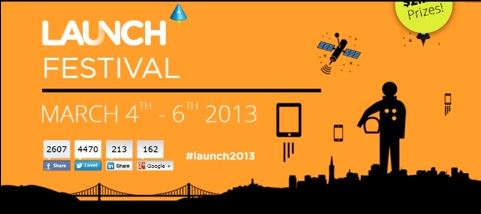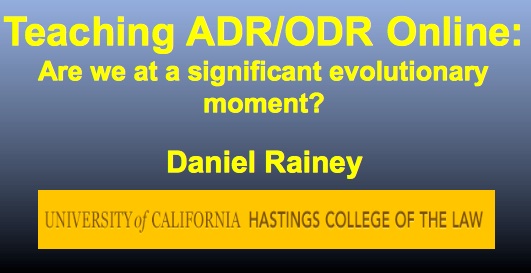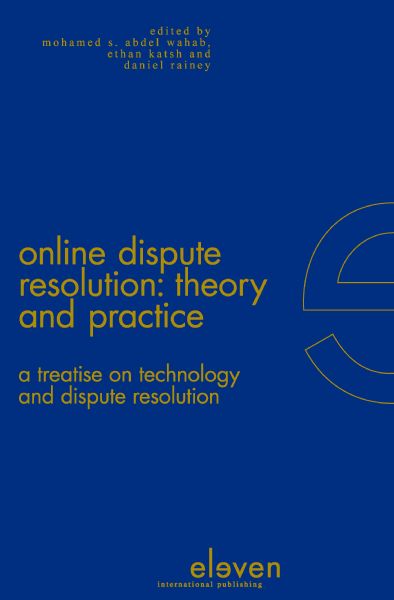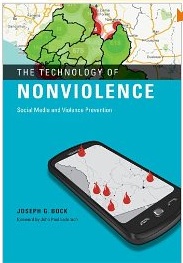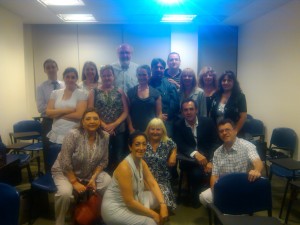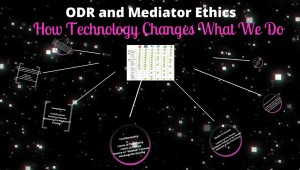
[These are some notes I jotted down when I couldn’t get back to sleep this morning after “appearing” at the WSIS Forum in Geneva. They are not comprehensive by any means, and I hope they don’t do any damage to the intent of my colleagues, whose comments I summarize a bit.]
–
The 2013 World Summit on the Information Society Forum in Geneva included a panel discussion on ODR chaired by Frank Fowlie (Ombudsman for the International Office for Migration), and featuring, among others, Colin Rule (CEO of Modria.com), Graham Ross (VP at Modria.com and an ODR pioneer), and me. Frank was in Geneva, Colin was in California (at 2:00 a.m.), Graham was in Wales, and I was in Alexandria, just outside of DC (at 5:00 a.m.).
–
Frank’s overview and panel introduction included a quote from Richard Susskind, which I will have to paraphrase, but which essentially argued that the future of dispute resolution is online – he foresaw in his book, the Future of the Law, that everything except the most complex and most costly conflicts would be handled online.
–
Colin started the panel by giving an overview of the development of ODR and managed to quote Mao Tse Tung at 2:30 in the morning, arguing that there are boundless opportunities for ODR, and that we should “let a thousand flowers bloom.” Another of the points he made, which I later referenced, is that his work developing an ODR platform has moved from working with strictly traditional conflict resolution systems and formats to including case management and other “administrative” aspects of dealing with parties in conflict.
–
I was asked to address ODR issues from an e-government perspective, so I prepared remarks focused on Ombudsman programs, traditional mediation/facilitation programs, and public input channels. I opened my remarks with a couple of observations.
–
The first was that I take slight exception to Susskind’s assertion about the types of cases that are appropriate for the use of ODR tools. At the NMB we deal with cases that involve billions of dollars, with hundreds of open items, and we have found that ODR technology has a firm and useful place in the handling of those cases. I think Susskind was probably talking more strictly about the law and the kinds of cases that could be taken from the traditional courts, but still it is good to think of ODR more broadly. Graham, in a comment later in the session, matched Colin’s Mao quote by noting that for a frog at the bottom of a well, the sky is a small, round patch of blue. I think all of us on the panel agree that it is necessary to look horizon-to-horizon for ODR opportunities, not just at the patch of blue immediately above us.
–
The second was that I agree with Colin’s observation about the breadth of what we should call ODR. When I first went to the National Mediation Board in 1997, one of my tasks was to figure out how to integrate technology into the business systems of the NMB. Their business happened to be dispute resolution, and the reason I was there in the first place was that I knew something about mediation and something about technology. Frankly, there weren’t many of us around who fit that description in the mid-1990’s. So, the first thing I concentrated on was the creation of communication channels, then on creating information sharing systems, and then on creating platforms that allow for parts of the dispute resolution process to be done online, synchronously and asynchronously. That experience cemented in my mind that making information and communication channels available to parties and third parties can be just as important, and just as much a part of a dispute resolution process, as the mechanics of running a mediation, facilitation, or arbitration session. It is also the experience that brought me to think of third party work as consisting of three basic functions: facilitating communication among the parties, facilitating the sharing of information and data among the parties, and managing the group dynamics created by the dispute resolution process.
–
I started my prepared remarks by recounting a phone call that I recently received from a large U. S. Government agency. This is an agency that handles a large case load of mediation and facilitation cases in a particular sector of the economy, nation-wide – and they have been told that, because of the recent draconian budget cuts in the U.S., they have no travel money at all for the rest of this year. They were interested in the NMB’s ODR program because, for them, some use of ODR may become the only game in town for the near future.
–
Even in the best of economic times, government entities share a couple of characteristics that should suggest the use of ODR technology: potential parties/participants are scattered geographically, and there are massive numbers of potential participants in government conflict engagement systems. For the very brief time that I had on the panel, I talked about three conflict engagement venues in which e-government in the form of ODR would be useful.
–
Ombudsman programs exist for a number of reasons, including handling cases using traditional mediation and facilitation skills. One of the other features of a well-functioning Ombudsman office is the ability to serve as an early warning system for organizations, identifying potential areas of trouble and moving to avert conflict by acting on information that is, for lack of a better word, “pre-conflictual” in nature. Because there are a massive number of potential clients of government Ombudsman systems, and because they are often spread across time zones, use of ODR technology to allow access for the transmission of information, and even for conducing online mediation, facilitation, or coaching sessions is quite valuable. Additionally, we found while working on a couple of NSF grants from 2004-2010, that online conflict engagement is not merely an analog of face-to-face conflict engagement. One of the significant differences between online and offline processes is that online systems can offer the clients/parties anonymity, and, essentially, a safe haven for communicating information that they might be reluctant to communicate with attribution. For the early warning functions of an Ombudsman office, this would seem to be a true asset.
–
Traditional mediation, facilitation, coaching, and arbitration functions can obviously be conducted online. Very inexpensive tools allow for synchronous and asynchronous processing of cases, and the ability to use algorithms like the ones developed for e-commerce by eBay allow for the processing of a large number of cases with minimum staff involvement.
–
Public input functions may be radically changed by the use of ODR technology. Keeping in mind my assertion that information gathering and the fostering of communication are central to the process of conflict engagement, opening communication channels for citizens is at the heart of e-government and public conflict engagement. The challenge for those in government is what to do with the input when they get it. A couple of examples will illustrate what I mean. In the 1990’s, the US Department of Agriculture was working on a set of standards that would define what foods could be labelled “organic” in the U.S. In years past, USDA would have held a series of public meetings around the country, and they would have taken written comments, mostly from organized interest groups. For the organic standard they decided to use what, for them, was a new channel for comments – e-mail. If I remember the stats correctly, the USDA received over one million online comments in the first month that the comment period was open. The Obama Administration currently has in place what they have labelled the “Open Government Initiative.” This program allows anyone with access to the Internet to make comments, create petitions, and give input to the government. The problem, as I indicated before, is that once you get the input you have to in some way make sense of it – the work being done in data mining and natural language research is making strides in this area, and will, eventually, lead to solid information coming from direct citizen input.
–
To wrap up my comments I started with what I think is a basic truth about the efforts that the U.S. Government has made to integrate technology into dispute resolution and citizen input: with few exceptions, the government has gotten it wrong, and indeed has gone about the development of online tools with a fundamentally flawed approach.
–
Specifically, in my experience development of online tools for e-government has been approached in the same way that the government has developed weapons systems or other big ticket items. Each problem has been approached as a unique situation, calling for development of complicated systems from the ground up by vendors who have an interest in developing complicated systems and charging for that complexity. This has led to any number of headline stories about millions of dollars spent on technology systems that fail to deliver at all on their requirements. To be fair, there are many expensive systems that do deliver, all or in part, but, then, one would expect an expensive system to do what it basically promised to do.
–
In my work with the NMB we have taken a different approach. The assumption has been that the basic functions we need are simple (remember my “three basic things we do as conflict interveners”) and that it is not necessary to totally fabricate a complex system to deliver these simple functions. So, over the past decade, we have built a complex of applications, most off the shelf with a very few custom functions built for our work, that operate in all areas of our dispute resolution systems, for less than one of the big-ticket projects that have failed spent in a week.
–
The lesson from this is not so much that we’ve been brilliant (but I do think we’ve been pretty smart), but that as a small agency a lack of access to millions of dollars forced us to think of the development process in a different way. With full disclosure, I am associated with Modria.com, but I would suggest that the development process there has been a model of what I am advocating for integration into e-government. Modria is a platform with modules that represent the commonly needed elements of conflict engagement systems. With very little redevelopment, it can be configured to do divorce mediation, Ombudsman work, tax assessment challenges, or contract negotiation. That should offer an attractive alternative to those interested in e-government development, both from a budget perspective and from a functional perspective.
–
If a thousand flowers are going to bloom in ODR, I think they will look a lot like the modular, focused flowers that already have been quietly and inexpensively successful in e-government.




